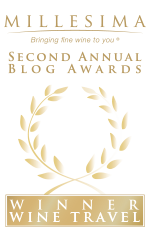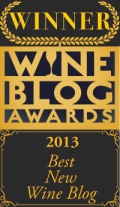 |
New Year’s Eve has arrived! Did you meet all your goals for 2014? No matter. You can reiterate them again on the first of the year, with a fresh glass of bubbles in hand: Make more money and cut back on carbs (or will 2015 be the end of an allergy return of gluten?), booze, and podcast binges.
Since Champagne and sparkling wines have long been the de rigueur drink of choice for New Year’s Eve (and for the days of recovery after), this year — as long as you don’t saber off the bottle tops — you can keep precious CO2 (fizz) trapped in the wine for almost a week, with a little life-support from a Genesis system.
But before I delve into my review of the Genesis and whether your Champagne habit justifies its $500 cost, here are a few bottle recommendations — some favorites from 2014 — worth seeking out for tonight’s toast.
Deal Disguised as a Splurge
Dom Ruinart Blanc de Blancs Brut, 2004, $129
This historic Champagne house produces an exquisite, exceptionally priced vintage tête de cuvee from Chardonnay grapes sourced exclusively from grand cru sites.
Good Value Champagne
Champagne Deutz, Brut Classic, NV, $42
Well-priced, lesser-known label owned by respected house Louis Roederer. So good, it was once the private-label Champagne of Morrell’s Wine Shop, which still carries the brand.
Italy’s Finest
Ferrari Perle, 2007, $38
This sparkling wine house out of Trentino, Italy, does what Champagne can, but for a lot less money: It makes long-aged, layered, elegant, and lively wines, including this vintage bottling, for half of what a Champers would run. The Ferrari entry-level NV Brut is a particular bargain, too, at around $20.
Grower and Organic
Pascal Doquet, Blanc de Blancs Premier Cru, $59.99
From a producer/grower who has diligently converted his vineyards to organic, a rarity in Champagne. This bottle is a blend of those organically farmed grapes from premier crus in the southern Côte des Blancs.
Back to the Genesis…

The Genesis, created by Napa Technology, is the first at-home, single-bottle wine preservation and dispensing system, designed for both still and sparkling wine. You may recall the big hit from last year, the Coravin, which — at one-eighth the size of the Genesis (akin to an oversized Rabbit Corkscrew), and for $200 less ($300 v. $500) — seems like the hands-down winner when compared with the Genesis, until you factor in the former’s incompatibility with bubbles.
The Coravin system inserts a slim needle into the cork, dispenses inert gas and draws out wine like a feasting mosquito, all while keeping the cork intact and the bottle fresh indefinitely. It can’t be used with Champagne, however, due to the air pressure in the bottle; hence the reason you (debatably) need a Genesis, too.
Genesis uses a proprietary technology called IntelliCork: Once the wine’s real cork is removed, the user places the bottle into the system (designed to sit on a kitchen counter and tuck in just below most cabinetry), so oxygen can be removed and replaced with “WineGas” before the bottle is topped with a special cork. Still wines save for two months; sparkling wines earn five extra days.
The product is composed of a silver base and black plastic casing, giving it the appearance of a giant, skinny coffee maker; it comes with two corks for still wine and one for sparkling, plus two canisters of WineGas, which is enough to preserve and pour 24 bottles.
After assessing the machine, I found it easy to use and capable of keeping my sparkling wine frothy. However, I’d recommend buying the Coravin if you like to sample wines over a longer period of time than two months, have space restrictions, and your bubble preservation needs range from minimal to the point of novelty.
But — and this is a big but — for regular drinkers of expensive, pressurized wines, i.e., Champagne (who are you, and can we be friends?), then Genesis is the only product on the market that can squeeze a few more sunsets from the bottle.
And for drinkers who wish to sample and save several sparkling bottles at once, they will need to invest in a few more specialty corks which cost a hefty $59.99 apiece. (The system only comes with one sparkling wine IntelliCork.)
Perhaps greater than for the home user, I see the practicality of restaurants investing in the system: They can offer a greater number of better-quality selections of sparkling wine by the glass, and do double duty preserving still wines, too.
The upgraded Genesis Pro, thus, is designed for tasting rooms and restaurants, costs $899, and comes with 10 IntelliCorks and enough WineGAS to preserve 40 bottles.
If your go-to sparkling is Freixenet (not that there’s anything wrong with it), the Genesis probably doesn’t fit into your budget, but it does give you something to aspire to when making your 2015 resolutions.
Happy New Year!
May 2015 bring you peace, prosperity and good wine.
Where to Buy:
Genesis: $499 plus shipping, is sold at GenesisPreserve.com, Amazon.com, WineEnthusiast.com, and NapaStyles.com
The Wines:
Chambers Street Wines, 148 Chambers Street, 212-227-1434
Flatiron Wines, 929 Broadway, 212-477-1315
Astor Wines, 399 Lafayette Street, 212-674-7500





















